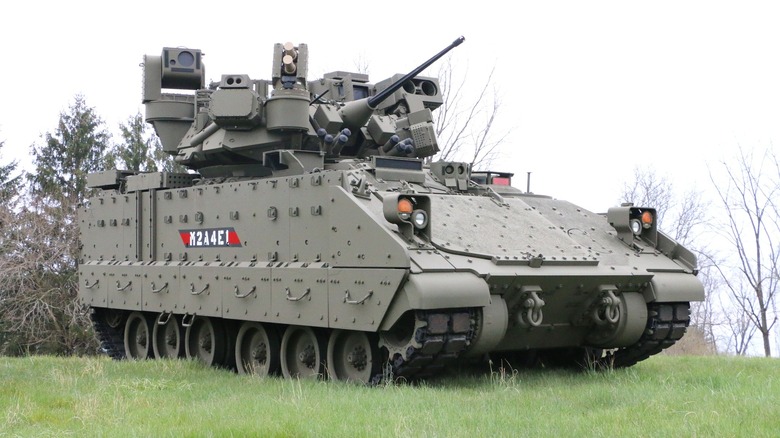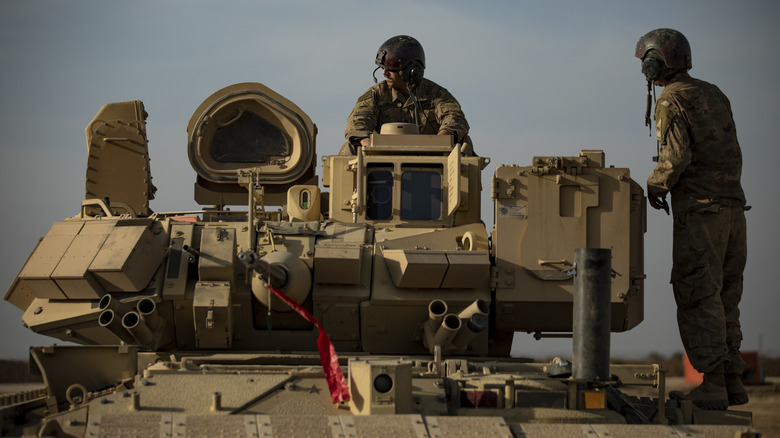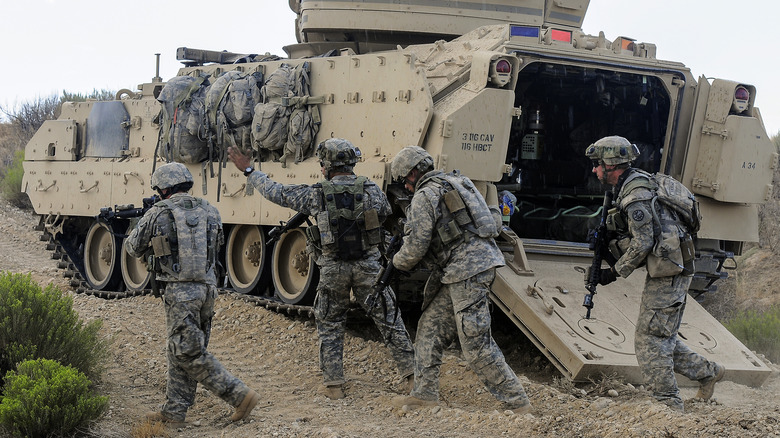The U.S Army Just Unveiled The Newest Version Of Its Combat-Tested Bradley IFV
Early in 2024, reports surfaced that the U.S. Army had inked a deal with Elbit Systems to acquire the Iron Fist active protection system (APS) to outfit the M2 Bradley. Now, it has become clear what the new batch of APS was intended for: a comprehensive upgrade of its M2A4 fleet to the new M2A4E1 standard.
The latest version of the M2 comes with several upgrades, with the most significant being the inclusion of the Iron Fist. From images released during the rollout ceremony of the M2A4E1, it's evident how much the APS has transformed the turret of the IFV. Alongside smoke grenade launchers, numerous sighting systems for both the gunner and commander, and the TOW missile launcher, the turret is now equipped with AESA radar slates, cameras, and Iron Fist's counter-munition launchers.
Given the significant threat posed by FPV-type drones on the modern battlefield, as demonstrated in Ukraine, the introduction of the M2A4E1 couldn't be more timely. According to Elbit, the system can detect, and then neutralize, loitering drones from a mile out. The hard-kill protection system will undoubtedly enhance the survivability of the vehicles, their crew, and the dismounts during deployments. In addition to drones, the Bradley will still face challenges from anti-tank guided missiles (ATGMs) and other traditional anti-vehicle munitions, among other threats — all of which the Iron Fist has a good testing record of being able to reliably defeat.
A new sighting system for the gunner
In addition to the Iron Fist, the M2A4 will also see some minor design enhancements. One notable improvement is the introduction of an "improved High Definition Forward Looking Infrared Gunner's Sight," as disclosed by the U.S. Army Program Executive Office.
The inclusion of an infrared gunner's sight is not entirely new for the Bradley, as the current M2A4 already features the Improved Bradley Acquisition Subsystem (IBAS). The IBAS provides the gunner with forward-looking infrared (FLIR) capability, enabling target acquisition even in low-light conditions, fog, and dust. Additionally, with an integrated sight stabilization system and a 4X to 12X magnification zoom, the gunner can engage far-away targets accurately through the sight despite the intense recoil of the 25mm Bushmaster chain gun.
While the exact capabilities of the new gunner's sight are yet to be fully revealed, the "high-definition" designation suggests it may deliver improved contrast, reduced jitter, and higher image resolution compared to the IBAS, which has been in use since 2000.
At last, air conditioning for troops in the back
One of the biggest gripes among troops who have spent time inside a Bradley is the lack of air conditioning in the already cramped rear compartment. The scorching heat of the Middle East, coupled with the body heat of five to six soldiers and the diesel engine's radiating heat, it's a recipe for heatstroke. While the Bradley does come equipped with limited air conditioning in the form of a personnel heater, which can provide some comfort during cold conditions, the vehicle still needs cooling. This is a design flaw that the new Environmental Control Unit (ECU) aims to address, which will vastly improve comfort for soldiers in hot, dry environments.
These are the three upgrades the U.S. Army has mentioned for the M2A4E1 so far. While it's an incremental improvement (the planned major overhaul, designated the M2A5 was scrapped years ago), the E1 upgrade is still shaping up to give the vehicle a good boost in lethality, crew comfort, and most importantly, the survivability of the vehicle in the rapidly changing 21st-century battlefield condition.


